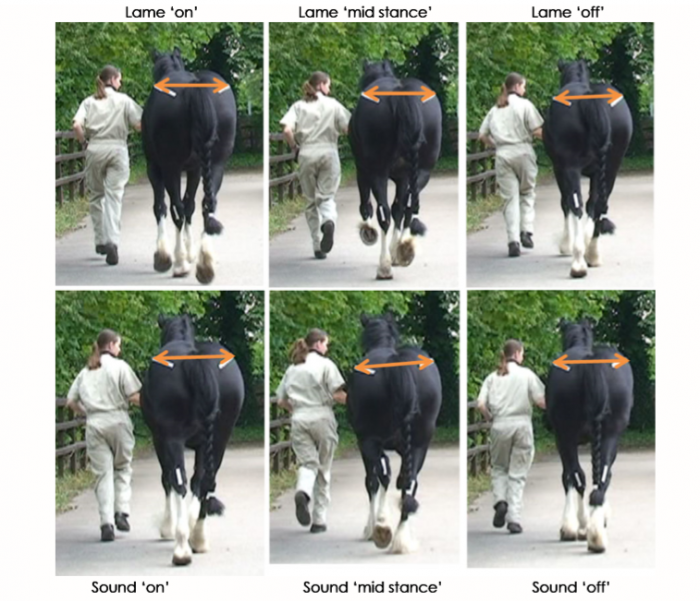
The use of inertial sensors in equine gait analysis
Recent studies have investigated the validation of the inertial sensors in conditions related to clinical lameness examination, such as lunging, flexion tests and diagnostic analgesia. This study critically reviews these studies and summarise the guideline parameters in these clinical conditions.
Two parameters were investigated as lameness related parameters in this study, namely the head nod and the hip hike. The head nod is commonly described as a reduction in vertical movement of the head during the stance phase of the affected forelimb with a lower minimum position at mid-stance of the sound(er) limb. The hip hike has been reported as an increased movement amplitude of the tuber coxae on the side of the affected hindlimb during the stance-phase of the sound(er) hindlimb.
Although the current intertial sensor systems don't quantify all the gait adaptations seen in lame horses, its results on the head nod and hip hike are shown to be valid and reliable. It is determined that, when the head nod or hip hike shows asymmetries of 5 mm or more, the system detects relevant asymmetrical movements. Repeatability measurements showed relevant changes when the sensors revealed variances bigger than 6 mm for the head nod and 3 mm for the hip hike and higher levels of variety were related with higher levels of lameness. The results of the intertial sensors on the two gait parameters are reported to be significantly related to the visual gait scores. First useful guideline values of the inertial sensors in the flexion test and diagnostic analgesia condition are addressed as well.
Expert opinion by Isabeau Deckers
Clinical decision making requires not only veterinary knowledge but also the assessment skills and clinical reasoning. To provide the veterinary professionals with valid tools in lameness examinations, systems such as the inertial sensors can be used to quantify the gait parameters in the horses. Though, skills and specific knowledge to obtain and interpret these results are required as well when using these systems.
> From: Pfau, Equine Vet Educ 28 (2016) 209-215. All rights reserved to Elsevier Ltd.. Click here for the online summary.


